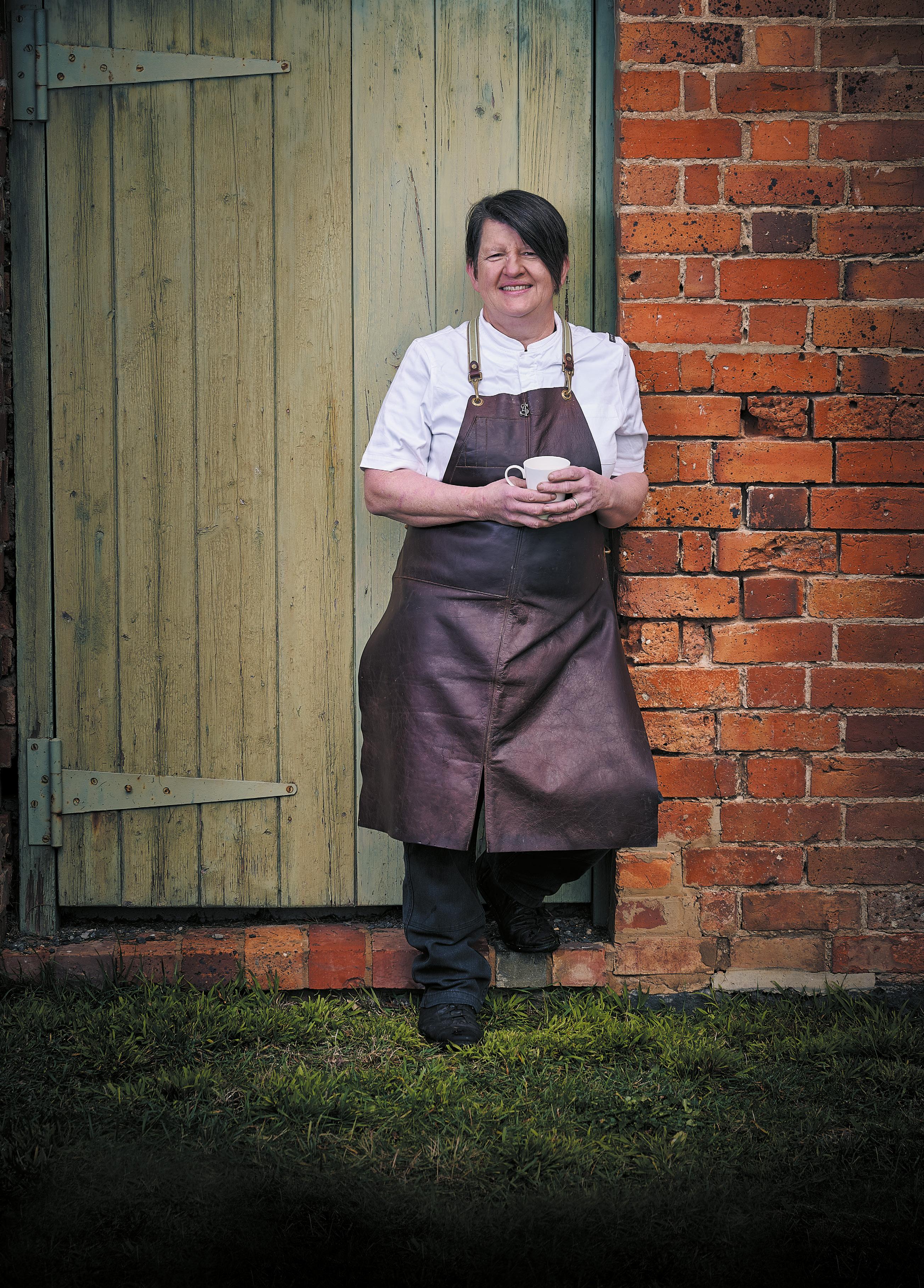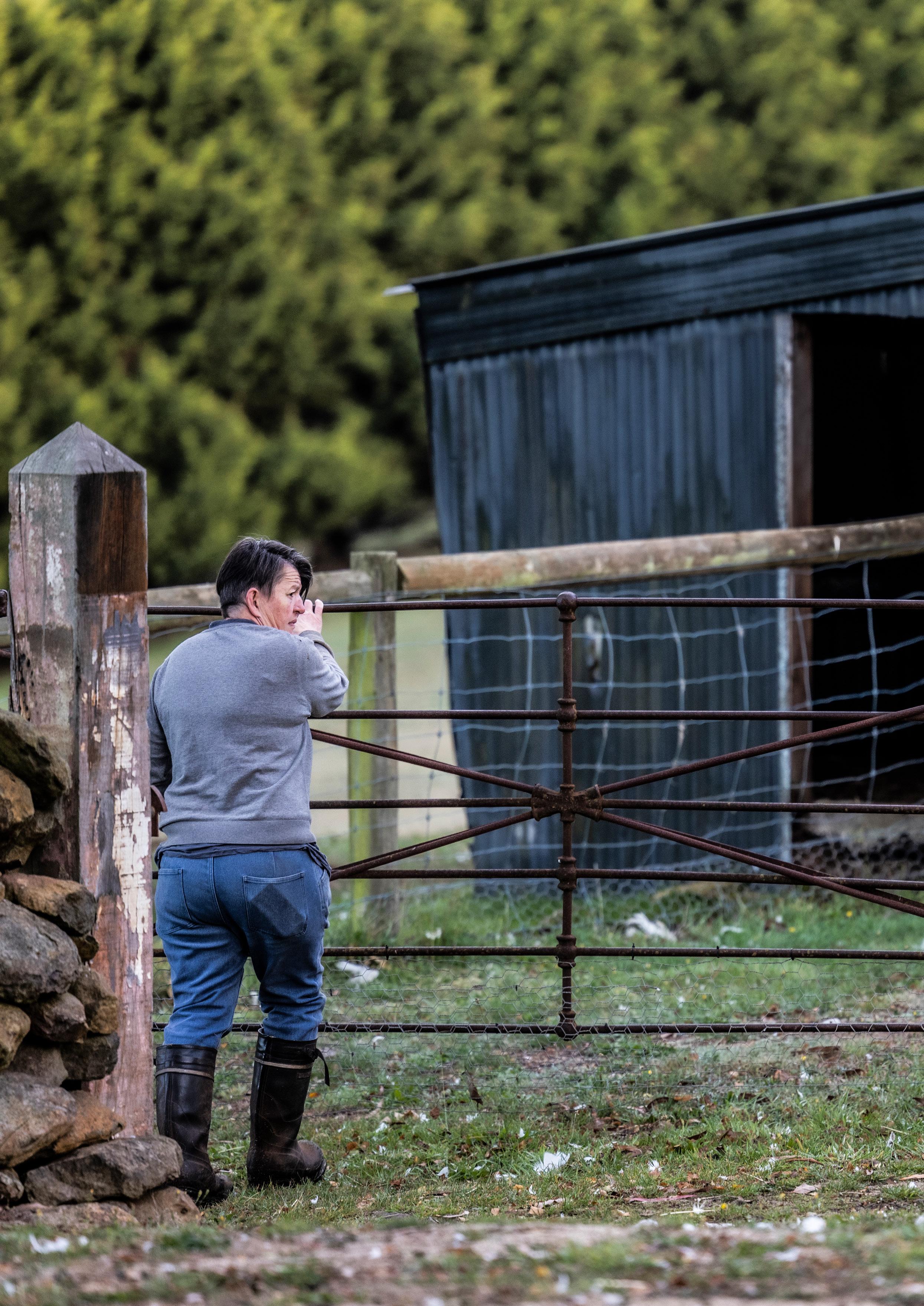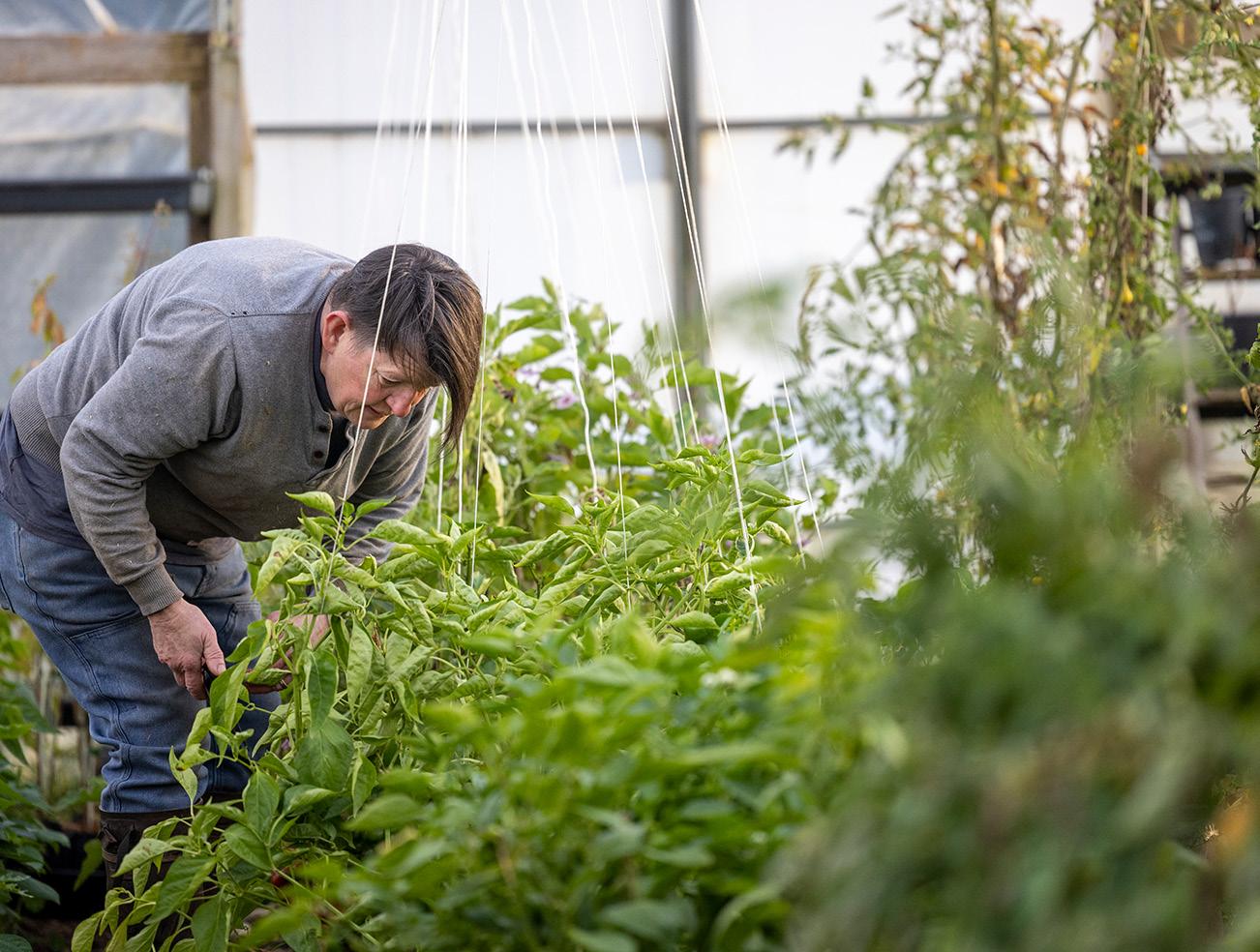
5 minute read
MOVERS AND SHAKERS: ANNIE SMITHERS
Annie Smithers
The chef is taking diners to the French countryside at Du Fermier.
- WORDS Aristine Dobson
SOURCING LOCAL PRODUCE and creating seasonal menus is the norm for restaurants. Considerate practices have changed the culinary landscape for the better, prompting chefs to form stronger bonds with producers and even start growing their own ingredients.
Annie Smithers has long been an advocate for the paddock-to-plate ethos, which is a key pillar at her French farmhouse and restaurant Du Fermier. The Victorian chef opened the 24-seater in Trentham 10 years ago and it has been instrumental in pioneering sustainable cooking and farming practices.

Smithers talks to Hospitality about using ingredients from her garden, making connections with local farmers and running the kitchen solo.
Annie Smithers has had a fruitful career spanning more than 30 years. She trained under Stephanie Alexander in Melbourne’s Hawthorn, where she was taught the ins and outs of classic French home-style cooking. “I have a great love of French food,” says Smithers. “I love the technical, historical and scientific side — it all just makes me very happy.”
-Annie Smithers
Since then, Smithers has followed her own path and spent the better part of 20 years working in regional Victoria. In 2008, she opened her first restaurant Annie Smithers’ Bistro in Kyneton and grew produce on her acreage in Malmsbury.

While the venue experienced great success, it resulted in some valuable lessons. “Annie Smithers’ Bistro ran to a much more standard restaurant format in those days, which was an à la carte menu with six choices across entrée, main course and dessert,” says Smithers. “Because we grew a lot of the food — and I was intricately involved with the fruits and vegetables we produced — the one thing I realised was the level of wastage that occurred with a full à la carte menu.”
Smithers sold the bistro and went into her next venture Du Fermier with a refined approach. “I was keen to bring it back to a fixed-price set-menu offering so we could utilise the products from the garden more effectively and quash wastage,” says the chef. “It was an opportunity to really drive that narrative for the restaurant.”

With just 24 seats, Du Fermier operates on a smaller scale, which allows Smithers to have greater flexibility in the kitchen and better work–life balance. “It’s really important for me to mould the business around my needs as well as the needs of others,” she says. “Sustainability to me starts with personal sustainability; you can’t save the planet if you can’t save yourself.”
On top of harvesting the restaurant’s market garden, Smithers runs the kitchen solo, doing everything from baking bread to breaking down whole animals. A new menu is created every week, with dishes informed by time of year and ingredient availability. “I can say, ‘It’s 40 degrees Celsius tomorrow and then it’s 20-something the next two days’, so I [create] the menu around those parameters,” says Smithers. “The customer gets the best-possible experience I can offer them.”

Smithers grows almost all of the restaurant’s fruits and vegetables herself with the exception of citrus. Proteins such as lamb, beef and pork are sourced within kilometres of the restaurant from farmers who share the chef’s sustainable ethos. “I choose farmers who have similar ethics, but who are also passionate and regenerative farmers,” says the chef. “If we don’t support regenerative farmers, we’re not going to have a food future.”
The chef works with different proteins each week, taking the time to butcher them herself. At the time of interview, Smithers was working with lamb. “They come in whole and I break them down,” she says. “With my pork and beef, I don’t know what cuts I’m getting until they arrive; it makes me think on my feet and also helps me work very productively.”
The food at Du Fermier is aptly described as ‘French farmhouse cooking’. The same dish is never served twice and the dining experience is reminiscent of the countryside, reflecting the restaurant’s small-scale ethos — think ruby chard galette, hay-smoked ham and beetroot tarte tatin.

Annie Smithers is not just a chef, she is a gardener and teacher too, who welcomes everyone into her restaurant like she would her own home. A master of her craft and the pig, she knows there are endless possibilities with pork, and she’s passing it on. She is a PorkStars.
As a lover of French cuisine, Smithers couldn’t go past making a classic coq au vin recently and has been working with a local rooster producer. “I’ve been supporting a young farmer who is growing our roosters to 18–20 weeks,” says the chef. “I’m incredibly proud to use birds that are farmed so carefully and are completely different to the standard chicken offering.”
Du Fermier has celebrated a decade in business, and there’s no doubt its longevity is a testament to Smithers’ dedication to her craft. The restaurant is almost always booked out, with guests vying for a seat at the chef’s table. “In this really big world with so many restaurants, we [offer] a small and very personal experience which is getting a little lost,” says Smithers. “We don’t see many businesses like this anymore. People really appreciate the ethics we work to, and they feel loved and nurtured when they come in the door.”
- Du Fermier translates to ‘from the farmhouse’
- Smithers completed apprenticeship Stephanie’s Restaurant T
- The chef breaks down whole animals
- Bookings are limited to eight diners








